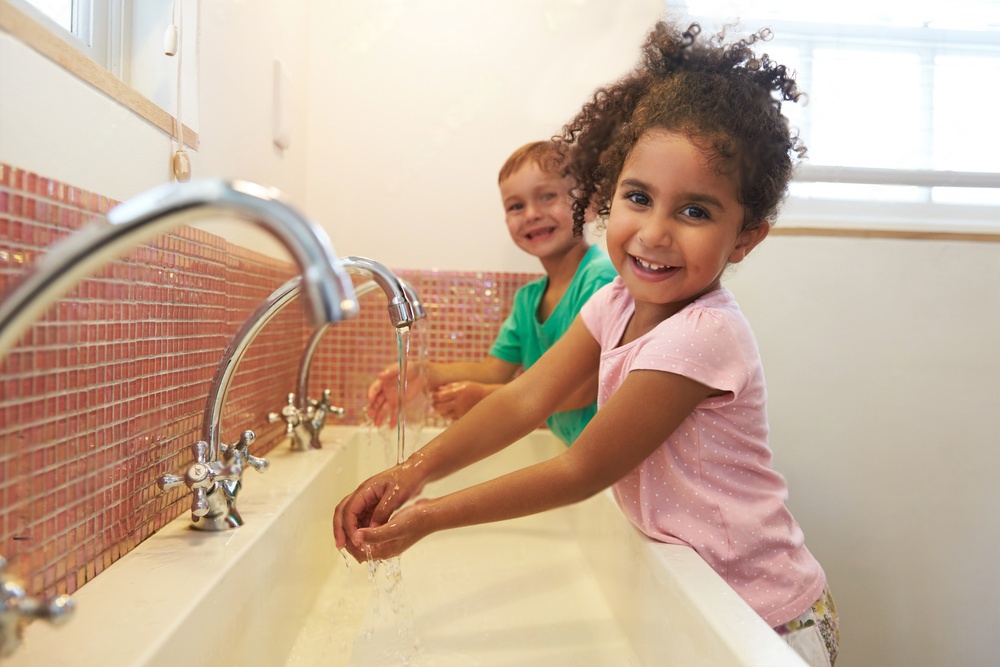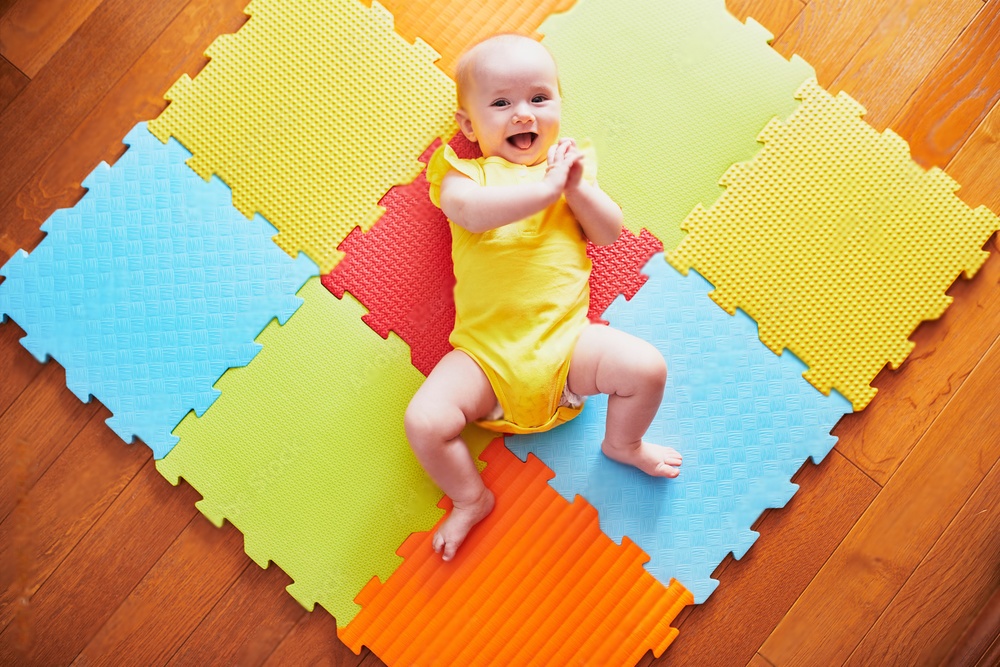Welcome to our blog where we explore the best practices for maintaining a healthy and germ-free environment in a nursery setting. We understand that as parents or caregivers, your top priority is to protect the little ones in your care from any harm, especially from pesky germs. That’s why we’re here to share some expert tips and advice on how to prevent the spread of germs in a nursery setting. So, grab a cup of tea, sit back, and let us guide you through the world of nursery hygiene.
Understanding the importance of nursery hygiene
Maintaining good hygiene practices is of utmost importance in a nursery setting. In this blog section, we will delve into the reasons behind this significance and explore the risks associated with the spread of germs. By understanding the potential consequences for children’s health, we can establish a strong case for prioritizing nursery hygiene.
The Risks of Germ Spread
Children in a nursery setting are particularly susceptible to germ transmission due to their close proximity and shared spaces. Without proper hygiene practices in place, the risk of infections and illnesses significantly increases. Here are some of the key risks associated with the spread of germs in nurseries:
- Respiratory Infections: Viruses such as the common cold, flu, and respiratory syncytial virus (RSV) can spread easily among children through close contact or contaminated surfaces.
- Gastrointestinal Infections: Bacterial infections like norovirus and rotavirus can cause severe diarrhea and vomiting, leading to dehydration and other complications.
- Skin Infections: Bacteria, fungi, and viruses that cause skin infections, such as impetigo and ringworm, can spread through direct contact or by sharing contaminated items.
- Eye Infections: Conjunctivitis, commonly known as pink eye, is highly contagious and can spread rapidly within a nursery environment.
The Consequences for Children’s Health
Neglecting nursery hygiene can have detrimental effects on children’s health. By not implementing proper hygiene practices, we expose children to various risks and potential consequences, including:
- Illnesses and Absences: When children fall sick due to germ transmission, they may experience prolonged absences from nursery, disrupting their learning and social development.
- Complications and Hospitalizations: Certain infections, such as respiratory syncytial virus (RSV) and rotavirus, can lead to severe complications that require hospitalization and medical intervention.
- Spread to Vulnerable Populations: Children who are immunocompromised, have chronic illnesses, or are too young to receive vaccinations are at higher risk for serious infections. Poor nursery hygiene puts these vulnerable populations at even greater risk.
- Impact on Staff and Families: When children become ill, it not only affects their own health but also impacts the nursery staff and their families. This can lead to increased absences among staff and potential spread of infections to other family members.
Establishing Good Hygiene Practices
To ensure the well-being of children in a nursery setting, it is crucial to establish and maintain good hygiene practices. Here are some key measures that should be implemented:
- Hand Hygiene: Encourage frequent handwashing with soap and water, especially before meals, after using the toilet, and after sneezing or coughing. Use child-friendly hand sanitizers when handwashing facilities are not readily available.
- Cleaning and Disinfection: Regularly clean and disinfect surfaces, toys, and equipment using appropriate cleaning agents. Pay special attention to high-touch areas such as doorknobs, light switches, and play areas.
- Personal Protective Equipment (PPE): Provide staff with appropriate PPE, such as disposable gloves and aprons, to minimize the risk of cross-contamination.
- Proper Waste Disposal: Ensure that waste is disposed of correctly and promptly to prevent the spread of germs. Use designated bins for different types of waste, and regularly empty and clean them.
- Educating Staff, Children, and Families: Conduct regular training sessions to educate staff, children, and families about good hygiene practices, including proper handwashing techniques and respiratory etiquette.
By implementing these measures, nurseries can significantly reduce the risk of germ transmission and create a healthier environment for children to learn and grow.
Remember, good hygiene practices in a nursery setting not only protect the children but also safeguard the well-being of staff and families. Let’s prioritize nursery hygiene to ensure a safe and healthy environment for everyone involved.
Establishing a clean environment
Creating a clean and hygienic environment is crucial for the health and well-being of babies and toddlers. In this blog post, we will provide you with practical tips on how to establish and maintain a clean nursery environment. From cleaning schedules to disinfection techniques, we’ve got you covered. Let’s dive right in!
Cleaning Schedules
A regular cleaning schedule is essential to keep your nursery clean and free from germs. Here are some tips to help you establish an effective cleaning routine:
- Daily Cleaning: Wipe down surfaces, such as changing tables and crib rails, using a mild disinfectant spray or wipes. Don’t forget to clean toys and play areas, as they can harbor germs. Consider using a toy cleaner specifically designed for baby items.
- Weekly Cleaning: Deep clean the nursery by vacuuming the floor, dusting shelves and furniture, and washing crib sheets and other linens. Pay special attention to areas that are easily overlooked, like ceiling fans and air vents.
- Monthly Cleaning: Take the time to thoroughly clean and sanitize larger items, such as high chairs and strollers. Follow the manufacturer’s instructions for cleaning these items to ensure effective disinfection.
Disinfection Techniques
Disinfecting surfaces in the nursery is crucial to prevent the spread of germs. Here are some effective disinfection techniques to consider:
- Using Disinfectant Sprays: Look for disinfectant sprays that are specifically formulated for use in nurseries. These sprays are designed to kill a wide range of bacteria and viruses. Remember to follow the instructions on the label and allow the surfaces to air dry after disinfection.
- Steam Cleaning: Steam cleaning is a chemical-free method to kill bacteria and sanitize various surfaces. Consider using a steam cleaner for items like carpets, upholstery, and curtains. It’s an environmentally friendly option that can effectively eliminate germs.
- UV-C Sanitizers: UV-C sanitizers use ultraviolet light to kill bacteria and viruses. They are particularly useful for items that cannot be easily cleaned, such as pacifiers, bottle nipples, and toys. Just make sure to follow the manufacturer’s instructions for safe and effective use.
Proper Waste Disposal Methods
Proper waste disposal is an important aspect of maintaining a clean and hygienic nursery. Follow these tips for safe and effective waste disposal:
- Diaper Disposal: Invest in a good quality diaper pail with odor-sealing features. Look for pails that use scented liners or have built-in carbon filters to help control unpleasant odors. Regularly empty the diaper pail and dispose of the diapers in a sealed bag.
- Medical Waste: If your child requires medical treatments or has specific medical conditions, consult with your healthcare provider regarding the proper disposal of any related waste materials. They will provide you with the necessary guidelines to ensure safe disposal.
- Recycling: Teach your child about the importance of recycling by setting up a recycling station in the nursery. Use separate bins for different types of recyclables, such as paper, plastic, and glass. Make it a fun activity by using colorful bins and explaining the benefits of recycling to your child.
Promoting regular hand hygiene
In this blog section, we will delve into the importance of hand hygiene in preventing the spread of germs. We will discuss the proper handwashing technique, highlight the significance of hand sanitizers, and explore effective ways to encourage children to adopt good hand hygiene habits. By the end, you’ll be armed with valuable insights to help keep yourself and your loved ones healthy.
The Power of Handwashing
Handwashing is a simple yet powerful act that can significantly reduce the transmission of germs. By following the proper technique, you can effectively remove dirt, bacteria, and viruses from your hands. Here’s a step-by-step guide to ensure you’re washing your hands correctly:
- Wet your hands with clean, running water (warm or cold) and apply soap.
- Rub your hands together to lather the soap, covering all surfaces. Don’t forget the backs of your hands, between your fingers, and under your nails.
- Scrub your hands for at least 20 seconds. Need a timer? Hum the “Happy Birthday” song from beginning to end twice.
- Rinse your hands thoroughly under running water.
- Dry your hands using a clean towel or air dry them. Ensure your towel is regularly washed and replaced to prevent the growth of bacteria.
Remember, handwashing should be done:
- Before, during, and after preparing food.
- Before eating.
- After using the restroom.
- After blowing your nose, coughing, or sneezing.
- After touching animals or cleaning up their waste.
- After caring for someone who is sick.
- After touching garbage.
The Role of Hand Sanitizers
In situations where soap and water are not readily available, hand sanitizers can be a convenient alternative. However, it’s important to choose the right sanitizer and use it correctly to ensure effective germ-killing. Here are some key points to keep in mind:
- Look for hand sanitizers that contain at least 60% alcohol, such as Purell Advanced Hand Sanitizer or Bath & Body Works PocketBac Hand Sanitizers.
- Apply a palmful of sanitizer and rub your hands together, covering all surfaces, until they feel dry.
- Use hand sanitizers sparingly and prioritize handwashing whenever possible, as sanitizers may not eliminate all types of germs.
Encouraging Children to Practice Good Hand Hygiene
Teaching children the importance of hand hygiene can be a challenging task, but with the right approach, it can become a habit that lasts a lifetime. Here are some tips to help you encourage your little ones to adopt good hand hygiene practices:
- Lead by example: Children often mimic their parents’ behavior, so make sure you practice proper hand hygiene yourself.
- Make it fun: Turn handwashing into a fun activity by singing a catchy handwashing song or using colorful, child-friendly hand soaps like Softsoap Aquarium Hand Soap.
- Explain the “why”: Help children understand why handwashing is important by explaining that it keeps them healthy and prevents the spread of germs to others.
- Create a routine: Establish a regular handwashing routine, such as before meals, after using the restroom, and after playing outside.
- Reward good behavior: Offer praise or small rewards, like stickers or extra playtime, when children consistently practice good hand hygiene.
Implementing Hygienic Practices in Daily Routines
Maintaining a hygienic environment is crucial in a nursery setting to ensure the health and safety of both children and staff. In this blog section, we will explore specific everyday routines and activities, providing guidelines on how to uphold cleanliness and minimize the risk of germ transmission. Let’s dive in!
Diaper Changing: Keeping It Clean
Diaper changing is a routine task in nurseries that requires careful attention to hygiene. Follow these steps to maintain cleanliness during diaper changes:
- Preparation is key:
- Gather all necessary supplies before beginning the diaper change, such as clean diapers, wipes, and diaper rash cream.
- Place a clean changing pad or disposable liner on a designated changing area.
- Wash hands thoroughly:
- Before and after each diaper change, wash your hands with soap and warm water for at least 20 seconds.
- If soap and water are not readily available, use an alcohol-based hand sanitizer with at least 60% alcohol.
- Proper disposal:
- After removing the soiled diaper, fold it up and secure it with the adhesive tabs.
- Place the used diaper and wipes in a tightly sealed diaper disposal bag or a hands-free diaper pail.
- Clean and sanitize:
- Wipe down the changing area with a disinfectant spray or wipe after each diaper change.
- Regularly clean and sanitize diaper changing supplies, such as changing pad covers and diaper caddies.
Mealtime: A Clean Feast
Mealtime in nurseries is not only a time for nourishment but also an opportunity to practice good hygiene. Consider these guidelines to ensure a clean mealtime environment:
- Clean surfaces and utensils:
- Before and after meals, clean and sanitize high chairs, tables, and any other surfaces used for eating.
- Use dishwasher-safe utensils and dishes to facilitate thorough cleaning.
- Hand hygiene:
- Encourage children to wash their hands before and after meals.
- Provide child-friendly hand soap and ensure they are using it correctly.
- Food handling:
- Store perishable food in appropriate containers to prevent contamination.
- Follow proper food handling procedures, such as using separate cutting boards for raw and cooked foods.
- Allergen awareness:
- Be mindful of food allergies and sensitivities among children.
- Clearly label and segregate foods that may pose a risk to certain individuals.
Playtime: Fun with Cleanliness
Playtime is essential for children’s development, but it’s also important to maintain a clean play environment. Here are some tips to keep playtime hygienic:
- Toy cleaning routine:
- Establish a regular cleaning schedule for toys, especially those frequently touched or mouthed by children.
- Use non-toxic disinfectant solutions or wipes to clean toys effectively.
- Personal items and clothing:
- Ensure each child has their designated storage space for personal items like coats, bags, and shoes.
- Encourage children to keep their personal belongings separate from others to minimize germ transmission.
- Hand hygiene during play:
- Teach children the importance of handwashing before and after playtime.
- Provide hand sanitizing stations or child-friendly hand sanitizers for easy access.
- Environmental cleanliness:
- Regularly clean and sanitize play areas, including floors, tables, and surfaces.
- Use child-safe cleaning products that effectively eliminate germs.
By implementing these hygienic practices in your daily nursery routines, you can create a clean and safe environment for children to thrive in. Remember, maintaining cleanliness is an ongoing effort that requires consistency and attention to detail. Stay vigilant and make hygiene a priority!
Note: This blog section does not include a conclusion.
Must-Have Nursery Germ Control: Product Suggestions for a Healthier Environment
Babyganics
Offers a range of baby-safe cleaning and sanitizing products designed specifically for infants and toddlers.
Buy from Amazon.comSeventh Generation
Provides plant-based, non-toxic cleaning solutions suitable for nurseries and safe for children.
Buy from Amazon.comDapple Baby
Offers baby-friendly cleaning products free from harsh chemicals, suitable for nursery environments.
Buy from Amazon.comWrap it up: Key takeaways for keeping germs at bay in a nursery
In conclusion, we have discussed the best practices for preventing the spread of germs in a nursery setting. By following these guidelines, we can create a healthier environment for the little ones under our care.
Firstly, it is vital to promote regular handwashing among both children and staff. This simple yet effective practice can significantly reduce the transmission of germs. Additionally, implementing proper sanitation measures, such as disinfecting toys and surfaces regularly, further minimizes the risk of spreading infections.
Furthermore, we emphasized the importance of maintaining proper hygiene practices, such as covering coughs and sneezes with a tissue or elbow, and promptly disposing of used tissues. Educating staff and parents about these practices ensures a collective effort in preventing the spread of germs.
Lastly, considering the individual factors of each child, such as their age and health conditions, is essential when implementing preventive measures. This ensures that the specific needs of each child are met, helping to safeguard their well-being.
In light of these factors, we recommend that nursery settings establish clear policies and guidelines regarding hygiene practices. Regular training and communication among staff members can help reinforce these practices and create a consistent approach to preventing the spread of germs in the nursery.
By incorporating these best practices and recommendations into our daily routines, we can create a safe and healthy environment for the children in our care. Let’s work together to protect the little ones and maintain a germ-free nursery setting.






